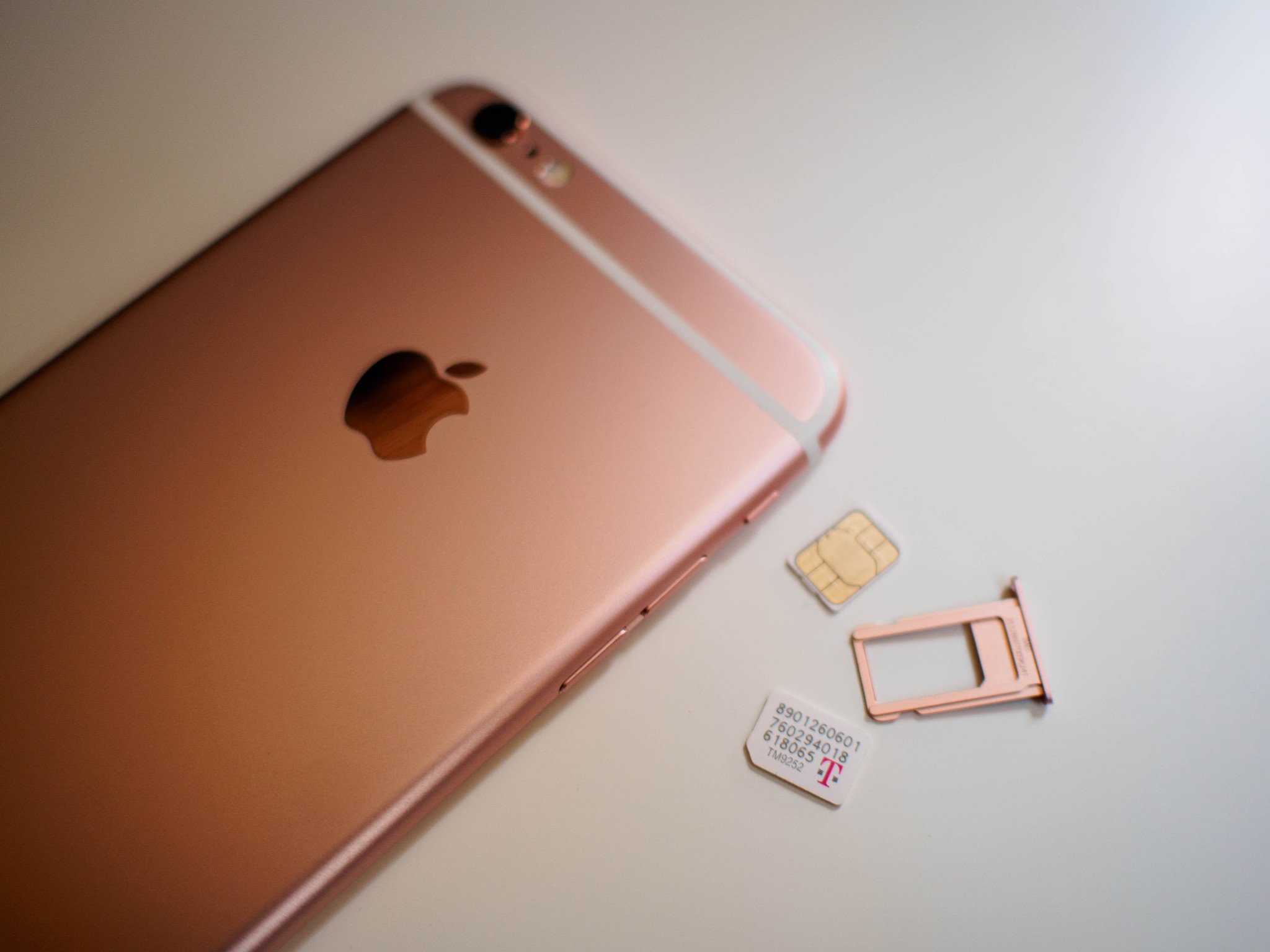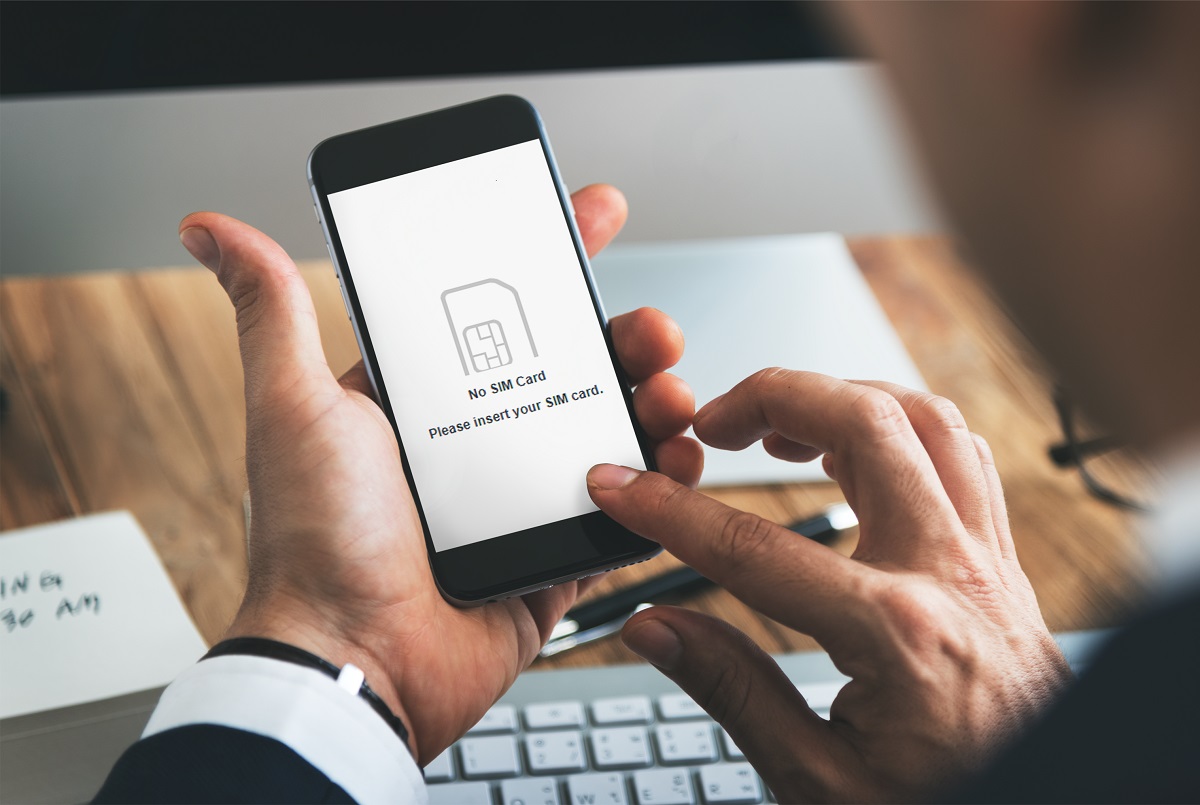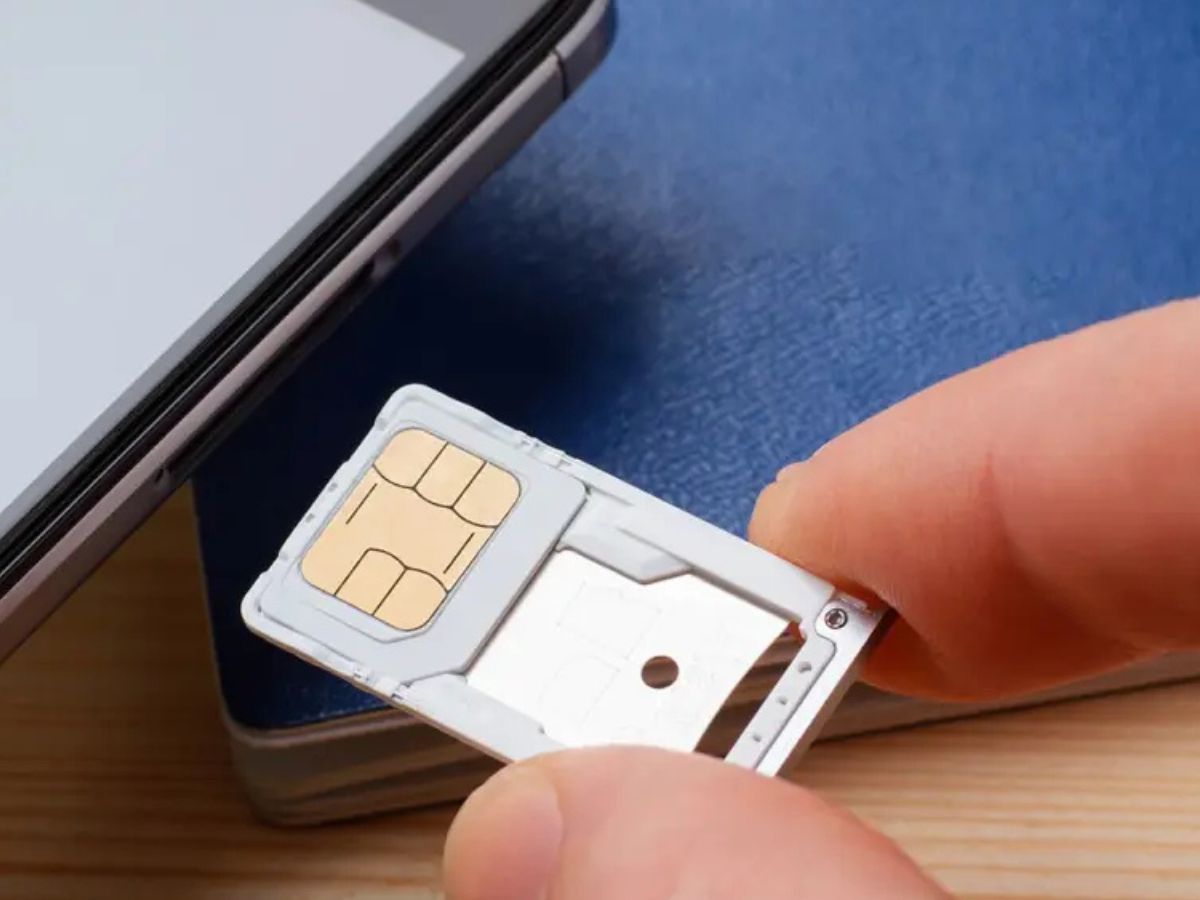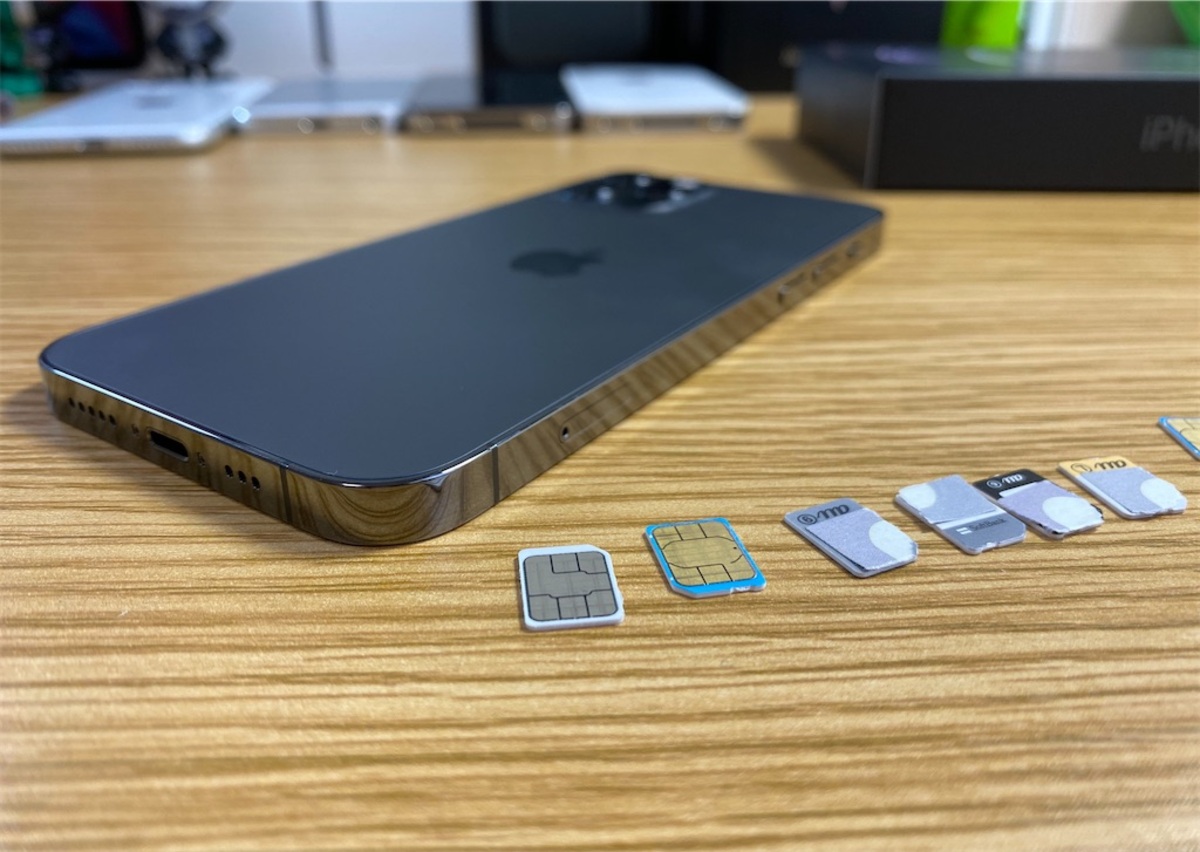Introduction
In the fast-paced world of mobile technology, the tiny yet mighty SIM card plays a crucial role in ensuring seamless connectivity and access to essential services. Whether you're a seasoned tech enthusiast or a casual smartphone user, understanding the contents of an iPhone SIM card can unravel a world of valuable information stored within this minuscule chip.
The iPhone SIM card, often nestled within a small tray on the side of the device, holds a treasure trove of data that influences the way we communicate, access mobile networks, and store crucial information. From contact details and text messages to network configurations and security features, the contents of an iPhone SIM card offer a glimpse into the inner workings of our digital lives.
As we delve into the intricacies of an iPhone SIM card, we will uncover the wealth of information it holds and the significance of accessing and understanding this data. Whether you're a curious individual seeking to demystify the inner workings of your iPhone or a tech professional looking to enhance your knowledge, this exploration will shed light on the importance of comprehending the contents of an iPhone SIM card.
So, let's embark on a journey to unravel the mysteries concealed within the confines of this diminutive yet influential component of modern mobile technology. By gaining insight into the contents of an iPhone SIM card, we can gain a deeper understanding of the pivotal role it plays in shaping our digital experiences.
What is a SIM Card?
A SIM card, short for Subscriber Identity Module, is a small, thumbnail-sized card that serves as a key component in mobile devices, including iPhones. This ingenious piece of technology acts as a secure medium for storing crucial information that enables a mobile device to connect to a cellular network and make calls, send text messages, and access mobile data services.
At its core, a SIM card contains unique identifying information that links a mobile device to a specific mobile network. This includes the International Mobile Subscriber Identity (IMSI), a unique serial number (ICCID), and a key known as the Ki, which authenticates the SIM card to the mobile network. These elements work in tandem to facilitate secure and reliable communication between the mobile device and the network, ensuring that the user can access voice, text, and data services seamlessly.
The SIM card also stores essential user information, such as the phone number and contact details, allowing the device to identify itself to the network and enabling users to communicate with others. Additionally, it holds security features that authenticate the user's identity and protect against unauthorized access, contributing to the overall security of the mobile network.
In the context of an iPhone, the SIM card is typically located in a small tray on the side of the device. With its compact size and pivotal role in enabling cellular connectivity, the SIM card represents a fundamental aspect of the iPhone's functionality.
Understanding the significance of a SIM card goes beyond its physical dimensions; it embodies the gateway to seamless mobile communication and connectivity. By comprehending the role and function of a SIM card, users can gain a deeper appreciation for the intricate mechanisms that underpin their mobile experiences.
What Information is Stored on an iPhone SIM Card?
The contents of an iPhone SIM card encompass a diverse array of crucial data that influences the device's functionality and the user's mobile experience. At its core, the SIM card stores essential information that facilitates seamless communication and connectivity. This includes:
-
Subscriber Information: The SIM card holds vital subscriber details, such as the unique International Mobile Subscriber Identity (IMSI), which serves as an identifier linked to a specific mobile network. Additionally, it contains the Integrated Circuit Card Identifier (ICCID), a unique serial number assigned to the SIM card, enabling the network to recognize and authenticate it.
-
Network Configuration: The SIM card stores network-specific information, including network authentication keys and settings that enable the device to connect to and communicate with the mobile network. This ensures that the iPhone can access voice, text, and data services provided by the network.
-
Contact Details: Users' contact information, including phone numbers and contact names, are stored on the SIM card. This allows the device to identify itself to the network and enables users to make calls, send messages, and manage their contacts seamlessly.
-
Security Features: The SIM card contains security features, such as the Ki (Authentication Key), which plays a critical role in authenticating the SIM card to the mobile network. This key ensures secure and encrypted communication between the device and the network, safeguarding against unauthorized access and enhancing overall network security.
-
SMS and Service Messages: Text messages, including service messages from the network operator, are stored on the SIM card. These messages may include important notifications, service updates, and configuration messages essential for maintaining network connectivity and receiving critical information from the mobile operator.
-
Authentication Information: The SIM card holds authentication information that verifies the user's identity and authorizes access to the mobile network. This authentication process is integral to ensuring secure and reliable communication, protecting against unauthorized usage and maintaining the integrity of the network.
Understanding the wealth of information stored on an iPhone SIM card provides insight into the intricate mechanisms that enable seamless mobile communication and connectivity. By recognizing the multifaceted nature of the data stored on the SIM card, users can gain a deeper appreciation for the pivotal role it plays in shaping their mobile experiences.
How to Access the Contents of an iPhone SIM Card
Accessing the contents of an iPhone SIM card involves navigating through the device's settings and using specialized tools to retrieve and interpret the stored information. While the SIM card itself is physically accessible through the SIM card tray, extracting and comprehending its contents requires a systematic approach. Here's a step-by-step guide to accessing the contents of an iPhone SIM card:
-
Locating the SIM Card Tray: Begin by locating the SIM card tray on your iPhone. Depending on the model, the SIM card tray is usually situated on the side of the device, either on the right or left-hand side. Use the provided SIM card eject tool or a paperclip to gently eject the SIM card tray from the device.
-
Removing the SIM Card: Carefully remove the SIM card from the tray, taking note of its orientation and position. Handle the SIM card with care to avoid damaging the delicate components.
-
Using a SIM Card Reader: To access the contents of the SIM card, you can utilize a SIM card reader, a small device that allows you to connect the SIM card to a computer or specialized software for data retrieval. Insert the SIM card into the reader and connect it to a compatible device.
-
Software Tools for Data Extraction: Once the SIM card is connected to a computer or device using the SIM card reader, you can employ specialized software tools designed for SIM card data extraction. These tools enable you to access and interpret the information stored on the SIM card, including subscriber details, contact information, and network configurations.
-
Interpreting the Data: Upon extracting the data from the SIM card, you can use the software tools to interpret the contents, including subscriber information, contact details, and network-specific configurations. This process allows you to gain insight into the wealth of information stored on the SIM card and understand its significance in facilitating mobile communication and connectivity.
By following these steps, you can effectively access and interpret the contents of an iPhone SIM card, gaining valuable insight into the wealth of information it holds. This knowledge provides a deeper understanding of the pivotal role played by the SIM card in shaping the functionality and connectivity of the iPhone, enhancing your appreciation for the intricate mechanisms that underpin your mobile experience.
Understanding the Importance of the Contents of an iPhone SIM Card
The contents of an iPhone SIM card hold immense significance in shaping the functionality, security, and connectivity of the device. Understanding the importance of these contents goes beyond mere technical knowledge; it offers a glimpse into the intricate mechanisms that underpin the seamless communication and network access facilitated by the SIM card.
First and foremost, the subscriber information stored on the SIM card, including the International Mobile Subscriber Identity (IMSI) and the Integrated Circuit Card Identifier (ICCID), serves as the digital identity of the device within the mobile network. This information is fundamental in authenticating and authorizing the iPhone to access network services, ensuring that the user can make calls, send messages, and access mobile data securely.
Furthermore, the SIM card's storage of network configurations and authentication keys plays a pivotal role in enabling the iPhone to connect to and communicate with the mobile network. These configurations dictate the device's ability to access voice, text, and data services, ensuring seamless connectivity and network interaction.
The inclusion of contact details on the SIM card also holds significant value, allowing users to manage their contacts and communicate effortlessly. This feature enables the device to identify itself to the network and facilitates the initiation of calls and messages, reflecting the essential role played by the SIM card in personal and professional communication.
Moreover, the SIM card's security features, including the Authentication Key (Ki), contribute to safeguarding the integrity of the mobile network and protecting against unauthorized access. This ensures that communication between the device and the network remains secure and encrypted, bolstering overall network security.
The storage of SMS and service messages on the SIM card further highlights its importance, as these messages contain critical notifications, service updates, and configuration messages essential for maintaining network connectivity and receiving pertinent information from the mobile operator.
By comprehending the importance of the contents of an iPhone SIM card, users gain insight into the foundational elements that enable seamless mobile communication and connectivity. This understanding fosters an appreciation for the intricate role played by the SIM card in shaping the user's mobile experience, emphasizing the significance of accessing and interpreting the data stored within this diminutive yet influential component of the iPhone.
In essence, the contents of an iPhone SIM card serve as the digital cornerstone of the device's connectivity and communication capabilities, underscoring the indispensable role played by this unassuming yet powerful element in the realm of mobile technology.
Conclusion
In conclusion, delving into the contents of an iPhone SIM card unveils a world of intricate details and pivotal information that underpin the device's connectivity, communication, and security features. The SIM card, often overshadowed by the allure of advanced smartphone technology, serves as the linchpin that facilitates seamless mobile experiences, from making calls and sending messages to accessing mobile data services.
By comprehending the multifaceted data stored on the SIM card, users can gain a deeper appreciation for the foundational role it plays in shaping their mobile interactions. The subscriber information, network configurations, contact details, security features, and stored messages collectively form the bedrock of the iPhone's connectivity and communication capabilities, highlighting the indispensable nature of the SIM card in the mobile ecosystem.
Furthermore, the process of accessing and interpreting the contents of an iPhone SIM card offers an enlightening journey into the inner workings of mobile technology. From locating the SIM card tray to using specialized tools for data extraction, this endeavor provides a deeper understanding of the intricate mechanisms that drive seamless network connectivity and communication.
Ultimately, the significance of the contents of an iPhone SIM card transcends its physical dimensions, encapsulating the essence of modern mobile connectivity and security. By recognizing the wealth of information stored within this diminutive yet influential component, users can develop a profound understanding of the fundamental elements that shape their digital lives.
As we conclude this exploration, it becomes evident that the SIM card, with its unassuming presence, holds the key to unlocking a world of connectivity and communication. By acknowledging its importance and gaining insight into its contents, users can harness a deeper understanding of the pivotal role played by the SIM card in shaping their mobile experiences.
In essence, the contents of an iPhone SIM card embody the digital essence of connectivity, security, and communication, symbolizing the convergence of technology and human interaction within the palm of our hands. Through this understanding, we embark on a journey of empowerment, recognizing the profound impact of a seemingly modest component on our modern digital lives.

























